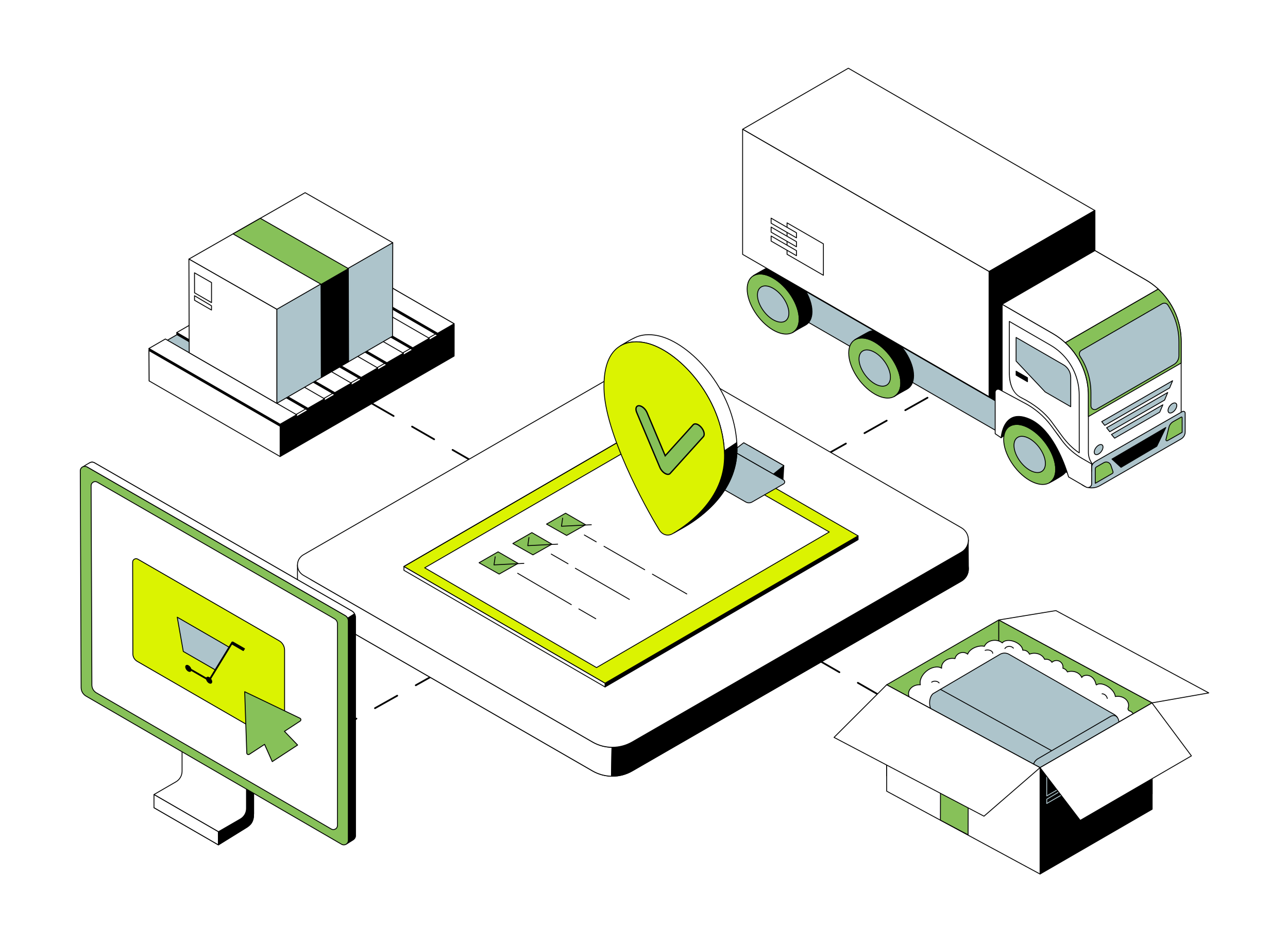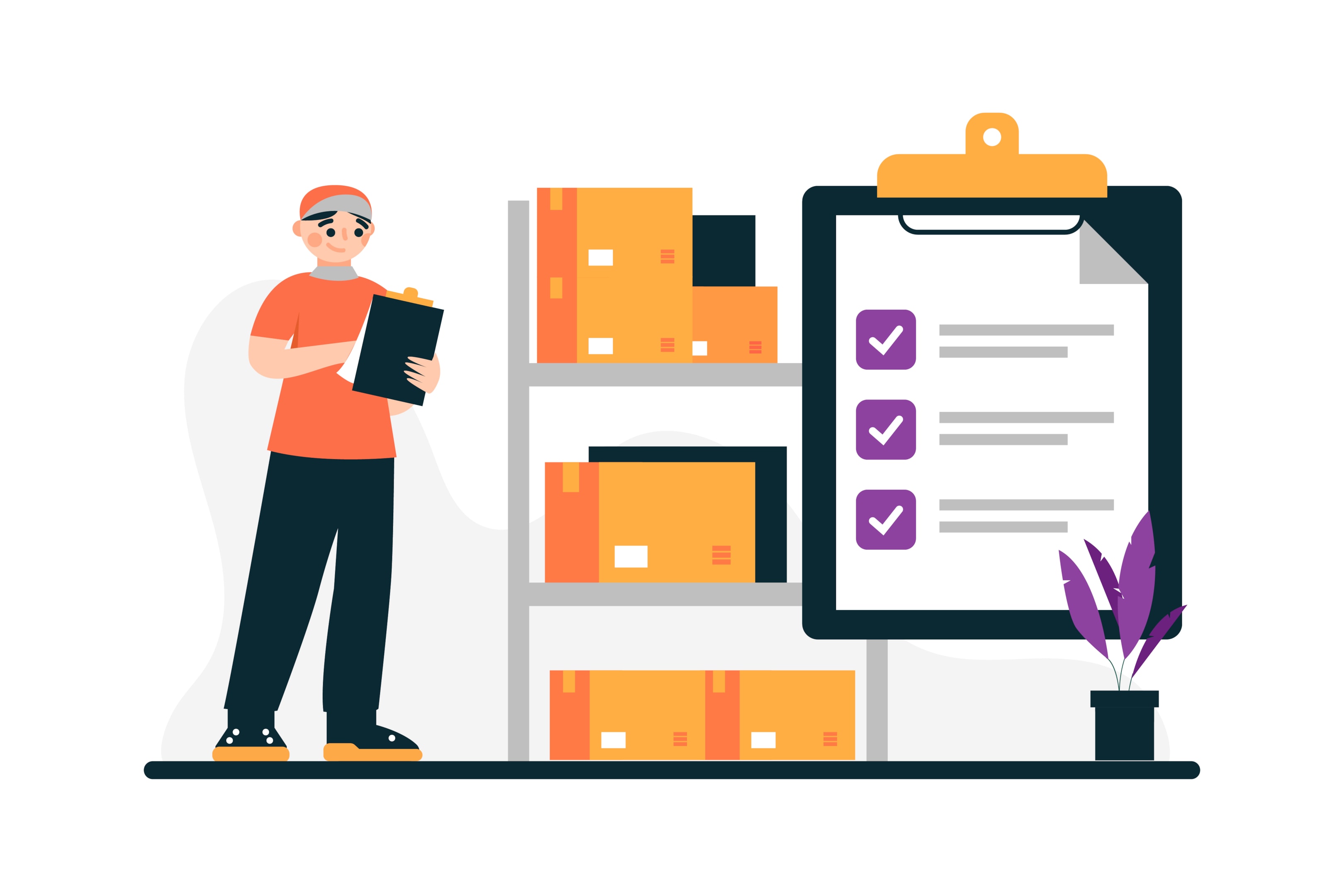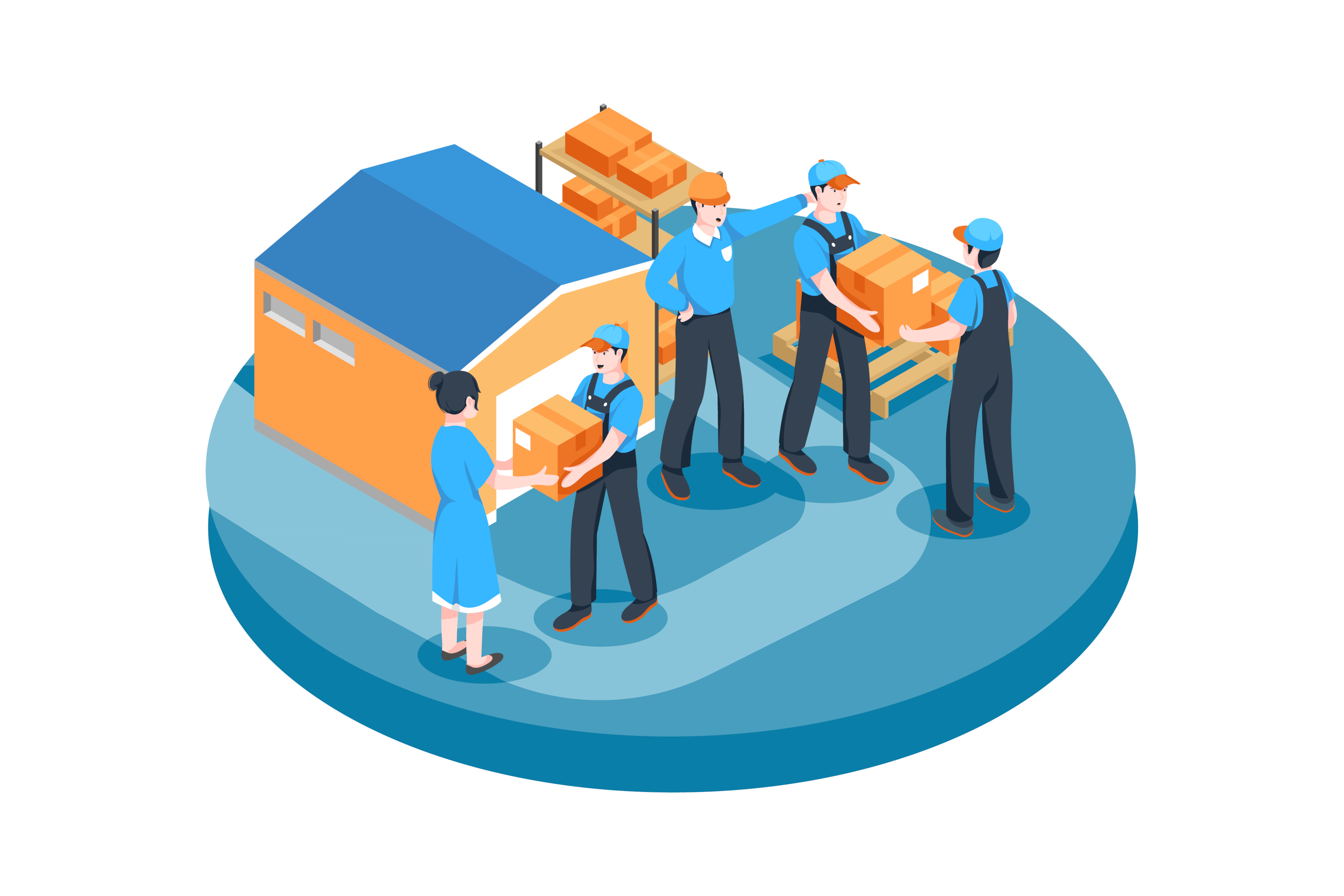Behind every smooth-running business lies a system quietly doing the heavy lifting – keeping the right items in the right place at the right time. That’s the essence of inventory replenishment. While it might not grab headlines, it plays a crucial role in keeping operations balanced and customers satisfied. When done right, it supports steady cash flow, reduces waste, and helps teams stay focused on growth rather than guesswork. In this guide, we’ll break down what it is, why it matters, and how to make it work for your business.
Key Takeaways
- Inventory replenishment is crucial for maintaining optimal stock levels, avoiding stockouts, and enhancing customer loyalty through timely order fulfillment.
- Effective replenishment strategies rely on accurate demand forecasting, lead time management, and extra stock to balance supply with customer demand.
- Automation and real-time data visibility are essential for streamlining replenishment processes, reducing costs, and improving overall operational efficiency.
Inventory Replenishment Definition

Inventory replenishment is the process of restocking products to maintain optimal inventory levels based on current and projected customer demand. The goal is to ensure that the right products are available at the right time – without overstocking or understocking.
In practice, inventory replenishment involves moving goods from reserve storage to picking shelves, placing new supplier orders, or even transferring stock between types of warehouses. It’s a proactive approach that supports smooth business operations, customer satisfaction, and cost control.
Inventory Control vs. Inventory Replenishment
Unlike stock control, which focuses on monitoring and managing existing stock, inventory replenishment is about restocking to meet demand without the risks of overstocking. This process is integral to the overall inventory management process, affecting various areas of an organization from manufacturing to marketing. The right amount of inventory is crucial for fulfilling customer orders, managing automated warehouse picking systems and maintaining service quality.
Supply Chain Resilience Through Smart Replenishment
Effective replenishing stock allows businesses to meet customer demand without overstocking or understocking. This balance helps manage inventory efficiently, reduce costs, and maintain customer satisfaction. Mastering your stock replenishment approach is vital to building resilience and responsiveness in your ecommerce supply chain management. In uncertain times or during peak demand, this preparation can prevent missed sales and delivery failures.
How Inventory Replenishment Works
A complex but critical component of inventory management is the process of inventory replenishment. At its core, the stock replenishment involves determining the frequency of restocking low inventory products, known as the replenishment period. This period is essential for maintaining efficient order and line-item fill rates by reordering items in time to meet customer demand. Stock replenishment work is vital for ensuring that inventory levels are optimized.
A key challenge in replenishment is the varying restock times and rates, adding complexity across multiple sales channels. Demand forecasting is essential for determining when to replenish inventory—especially for businesses looking to sell supplements and maintain product availability across categories.
Using Software to Manage Stock Replenishment
Inventory management software can automate the replenishment process, providing real-time visibility into stock levels, which is vital for making informed decisions. Smart software tools not only send alerts but can auto-generate purchase orders based on preset thresholds, making replenishment virtually hands-off.
Using real-time data tracking in stock replenishment systems gives businesses a competitive edge by allowing better responses to demand and improving overall process. This can be especially helpful for managing split shipments across multiple fulfillment centers and channels.
For companies seeking to streamline this further, implementing a robust WMS can significantly enhance efficiency. A warehouse management system (WMS) automates inventory tracking, optimizes warehouse layouts, and ensures replenishment tasks are executed accurately and on time – reducing manual work and improving scalability.
The Inventory Replenishment Process: 6 Steps

While the specifics can vary by business model or inventory system, the core stages of the process are consistent across most industries:
1. Monitoring Inventory Levels
Replenishment starts with real-time tracking of inventory, often through inventory control systems. Low stock alerts or threshold-based triggers notify teams when items fall below optimal levels.
2. Forecasting Demand
Businesses analyze historical data, seasonal trends, and sales velocity to predict future stock needs. This forecasting shapes the timing and quantity of replenishment orders.
3. Setting Replenishment Parameters
Reorder points, safety stock thresholds, and replenishment periods are defined based on lead times and forecasted demand. These parameters automate when and how much to restock.
4. Placing Replenishment Orders
Once thresholds are reached, automated systems or warehouse managers initiate purchase orders or trigger internal transfers between locations.
5. Receiving and Storing Inventory
Upon arrival, new stock is received, verified, and moved into storage or pick shelves—ready to fulfill orders. Businesses that optimize warehouse mapping can streamline this stage significantly.
6. Reviewing and Optimizing
Teams regularly review replenishment performance, adjusting reorder points or lead time buffers based on supplier reliability and demand changes.
By structuring your replenishment activities around this process, businesses can shift from reactive scrambling to proactive planning – ensuring smooth operations, reduced costs, and happy customers.
Stock Replenishment in Multi-Channel Retail
Stock replenishment can be tailored to fit any business size – from small e-commerce shops to large-scale manufacturers. For retailers operating on platforms like Shopify, Amazon, or their own storefront, syncing stock across all channels is critical. Omnichannel strategies require centralized data and unified replenishment rules to avoid double-selling or stockouts.
Whether you’re refilling fast-moving SKUs or forecasting seasonal demand, having a reliable stock replenishment strategy in place ensures continuity and reduces manual guesswork.
Importance of Inventory Replenishment for Businesses

Effective process is crucial for preventing stockouts, which can lead to significant sales losses and unhappy customers. An efficient replenishment system reduces costs and avoids overstock, effectively managing excess inventory.
High customer loyalty is achieved as timely inventory replenishment ensures that products are available when customers want them, preventing inefficient stock replenishment. Another reason for stock replenishment important is because it maintains a smooth supply chain.
Stock replenishment is not just about keeping shelves stocked; it’s about maintaining a balance that supports business operations, reduces costs, and enhances customer satisfaction. Smart inventory replenishment process improves efficiency and ensure readiness to meet customer demand.
Preventing Stockouts and Lost Revenue
If inventory is not replenished on time, there is a risk of stockouts and backorders. Stockouts lead to customer frustration and may cause them to turn to competitors. Moreover, being out of stock can result in lost sales for the merchant. The majority of stockouts can be attributed to poor stock replenishment practices.
Keeping buffer inventory on hand is a common strategy to prevent understocking. This ensures that businesses can maintain optimal product selection and fulfill demand consistently, preventing item shortages and backorders.
Preventing stockouts and performing stock replenishment process efficiently also helps protect brand credibility and buyer trust – especially in highly competitive markets.
Reducing Excess Inventory

Overstocking inventory can significantly impact the bottom line by increasing carrying costs and leading to unsellable inventory. Consequences of overstocking include increased storage costs, higher operational costs, and a heightened risk of inventory obsolescence. Having too much inventory increases the risk that items will become obsolete or remain unsold for extended periods.
Effective planning minimizes overstock, saves money, and reduces risks associated with unsellable inventory. Maintaining an effective stock replenishment strategy helps in accurately matching amount of inventory with actual demand through inventory replenishment plans.
Enhancing Customer Satisfaction
Replenishing backup stock provides a buffer against supply chain disruptions and ensures timely order fulfillment. Safety stock allows businesses to remain agile. This is particularly important when there are fluctuations in supply and demand.
By ensuring that products are available when customers want them, businesses can enhance customer satisfaction and foster loyalty. This not only meets customer demand but also helps satisfy customer demand and fulfill customer orders, strengthening the brand’s reputation and reliability.
Key Factors in Inventory Replenishment

Effective stock management depends on understanding lead times, demand forecasting, and safety stock. Inventory replenishment involves ongoing monitoring of amount of inventory to ensure timely restocking based on demand forecasts. Precise inventory records are fundamental for effective restocking.
Key strategies in inventory management include:
Regular audits to identify discrepancies and ensure accurate inventory data.
Continuous monitoring of holding costs to maintain profitability.
Strategic supplier partnerships to improve inventory tracking and enhance supply chain efficiency.
Lead Times
Lead times are critical in inventory replenishment, influencing when orders should be placed to avoid stockouts. Key points include:
- Longer lead times necessitate earlier reorder actions and increased backup stock to ensure a consistent supply.
- Average lead time measures the time it takes to receive an order after it’s placed.
- Lead times impact inventory decisions.
Understanding lead times helps plan lean time replenishment schedules effectively, ensuring uninterrupted customer demand fulfillment. This proactive approach is essential for maintaining optimal amount of how much stock and preventing inventory shortages.
Demand Forecasting
Accurate demand forecasting:
- Anticipates future inventory needs and aids effective replenishment planning.
- Helps businesses avoid overstocking by forecasting demand and determining necessary supply.
- Enhances inventory turnover analysis and safety stock calculation.
Re-assessing demand forecasts ensures accuracy and alignment with actual demand. Accurate forecasting determines the inventory to keep at each warehouse. Real-time inventory data helps identify slow-moving versus fast-moving items, supporting demand forecasting.
Demand forecasting data enhances decision-making and optimizes replenishment practices. Aggregating and disaggregating forecasts can assist in achieving better visibility over future demand. Automated demand forecasting utilizes historical data to predict future inventory needs, helping to prevent stockouts.
Safety Stock
Safety stock is emergency inventory kept on hand to safeguard against unexpected demand spikes and supply chain disruptions. It ensures businesses can meet customer demand during unforeseen circumstances.
By maintaining adequate backup stock, businesses can prevent stockouts and maintain customer happy. This approach is crucial for managing supply chain efficiency and ensuring that inventory processes are robust and reliable.
Common Inventory Replenishment Methods

By now we probably know what makes inventory replenishment important, so it’s time to learn all the “hows”. Key methods include:
- Reorder point method
- Periodic replenishment
- Top-off replenishment
- Demand-based (on-demand)
Common methods used for inventory replenishment involve the reorder point method, top-off replenishment method, periodic replenishment method, and on-demand replenishment method.
Each method offers unique advantages, allowing businesses to choose the best fit for their needs. Whether it’s moving goods from reserve storage to main locations for order fulfillment or restocking based on actual customer demand, these methods help maintain optimal stock levels and ensure efficient stock replenishment.
Reorder Point Method
The reorder point method ensures adequate stock levels by determining when to reorder inventory. Reorder point calculations focus on stock levels falling below a defined threshold, prompting restocking. Factors used to determine average daily usage include total units sold over a specific time frame.
The reorder point method involves:
- Balancing having enough stock and avoiding overstock.
- Regularly recalculating reorder quantities, especially during periods of fluctuating demand.
- Using a defined stock level to signal when to reorder, improving stock management.
This method provides a systematic approach to inventory replenishment, ensuring that businesses can meet customer demand without holding excess inventory. By setting clear reorder points, companies can streamline their replenishment processes and maintain optimal stock levels.
Top-Off Method
The top-off replenishment method is a strategy to replenish inventory during low demand periods. This method helps ensure that fast-moving stock-keeping units (SKUs) remain available when demand increases. Using the top-off replenishment method prepares stock levels for peak demand, preventing stockouts.
Replenishing inventory during off-peak times helps avoid rushes and prepares for high demand. This approach maintains a steady inventory flowing and enhances efficiency.
Periodic Inventory Replenishment Method
The periodic replenishment method involves:
- Restocking inventory at set intervals, regardless of current stock levels.
- Assessing inventory levels only at specific times during the process.
- Restocking inventory at predetermined intervals, irrespective of current stock levels.
An example of this method in practice is restocking bestselling products on a quarterly basis. The periodic method is effective in large warehouses with stable demand patterns. This approach ensures that inventory levels are maintained consistently, avoiding both overstock and stockouts.
Best Practices for Effective Inventory Replenishment

Effective replenishment streamlines shipments, lowers costs, ensures proper stocking, and reduces waste. An efficient inventory replenishment helps fulfill orders promptly, increases customer approval, boosts profitability, and reduces costs.
Technology plays a crucial role in managing inventory replenishment for businesses with extensive stock. Automated systems can optimize warehouse manager management by improving layout and speeding up packing and shipping processes.
Automation reduces labor and carrying costs, realizing significant savings. Automation helps businesses scale operations and accommodate larger inventory volumes.
Implementing the Right Technology
Tailored inventory management solutions enhance communication and visibility. Tools like WAPI offer built-in inventory management software and advanced data analytics to optimize stock management. Warehouse management software automates inventory tracking, reducing human error.
Solutions like WAPI help to monitor current stock levels and historical demand to assist businesses in maintaining optimal inventory levels. Automation solutions track inventory trends and prevent stock issues. Real-time, location-specific inventory visibility from WAPI enhances overall inventory control. Such tools also provide visibility into product movement and supply chain activity, ensuring businesses can react promptly to changes.
The right replenishment tools manage complexity and ensure operational stability. Optimized software should feature:
- Intuitive dashboards
- Strong integrations
- Low inventory alerts Replenishment orders systems use algorithms to generate purchase orders at set thresholds, enhancing efficiency.
AI improves strategies by:
- Analyzing datasets in real-time, allowing timely decisions.
- Automating reordering processes to ensure timely purchases based on predefined inventory levels.
- Using systems like InventoryLogIQ that provide low-stock alerts, helping avoid shortages.
Leveraging Real-Time Data
Real-time inventory data optimizes stock levels and provides timely insights on how much inventory is needed. Timely data allows more informed decisions on stock levels. It enhances control and ensures proactive decision-making.
Real-time inventory data helps businesses to identify patterns in demand, improving stock management. Understanding these patterns helps businesses react swiftly to demand changes, ensuring competitiveness and efficiency.
Developing Robust Inventory Management Strategies
Regular audits, standard receiving processes, and efficient warehousing are essential for effectively tracking inventory. Monitoring holding costs like staffing, storage, shrinkage, and depreciation avoids cutting into profit margins. To negotiate reorder prices effectively with suppliers, commit to ordering a significant amount for discounts.
Effective strategies require regular reorder point adjustments based on demand and supplier performance. This proactive approach ensures that you always know how much inventory is needed to align with customer demand, reducing the risk of both overstock and stockouts.
Automate Stock Replenishment

Automating replenishment maximizes efficiency and reduces inventory management errors. Inventory management software automates replenishment by calculating reorder points and sending notifications. Automation enhances accuracy by minimizing human errors in data entry and stock discrepancies.
Automation provides real-time visibility into stock levels and movements, improving decision-making. WAPI enhances inventory management for businesses by providing 24/7 monitoring and automated alerts. This ensures that inventory replenishment processes are always optimized, reducing costs and enhancing supply chain effectiveness.
Summary
Inventory replenishment is essential for maintaining product availability, meeting customer demand, and ensuring smooth operations. By understanding key factors businesses can strike the right balance between too much and too little inventory. Implementing best practices – such as leveraging technology, using real-time data, and automating routine tasks – not only minimizes errors but also enhances efficiency and responsiveness. A well-executed replenishment strategy reduces excess stock, prevents costly stockouts, and ultimately supports long-term customer satisfaction and business growth.
Inventory replenishment FAQs
How does real-time data improve inventory replenishment?
Real-time data significantly improves inventory replenishment by optimizing stock levels and providing timely insights, which lead to more informed decision-making. This enhances overall control and responsiveness in managing inventory needs.
What are the common methods of inventory replenishment?
Common methods of inventory replenishment are the reorder point method, top-off replenishment, periodic replenishment, and on-demand replenishment. Each method serves different business needs and ensures stock levels are maintained effectively.
Why is safety stock important in inventory replenishment?
It is crucial in inventory replenishment because it provides a buffer to handle unexpected demand increases and supply chain disruptions, allowing businesses to consistently meet customer needs. By maintaining safety stock, companies can minimize the risk of stockouts and maintain service levels.
How does automation benefit inventory replenishment?
Automation significantly enhances inventory replenishment by maximizing efficiency, reducing errors, and providing real-time visibility into stock levels, which ultimately leads to better decision-making.



 Community
Community
